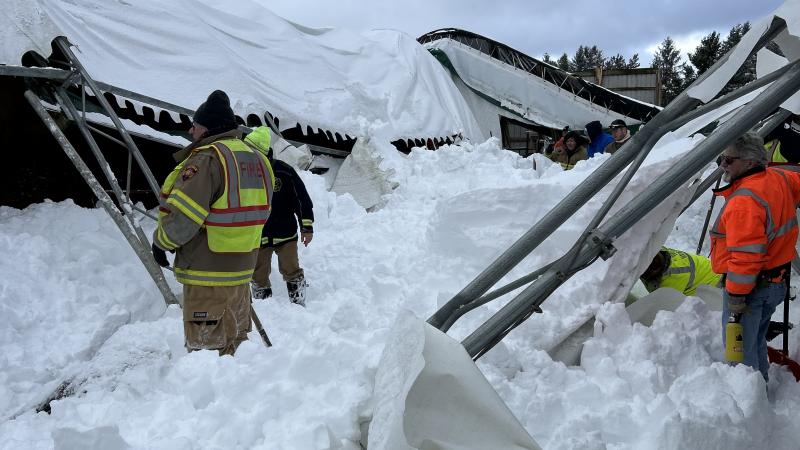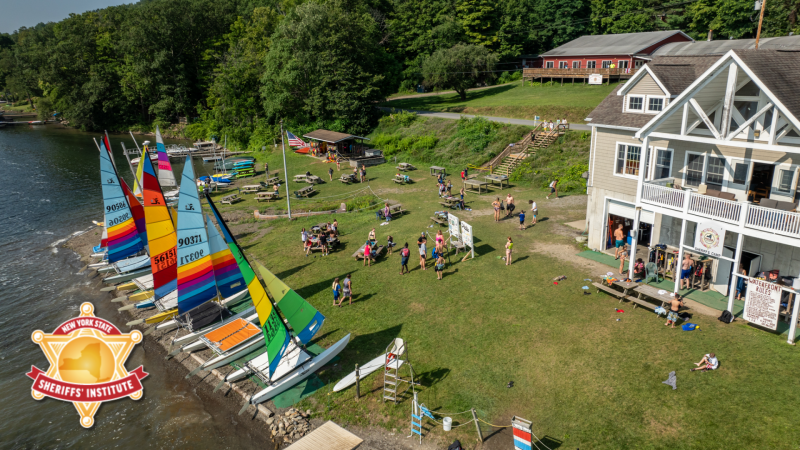History
Chautauqua County, the western gateway to New York State, occupies the extreme southwest corner of our state. With its two cities, Jamestown and Dunkirk, its 27 towns, and 15 villages, it covers 1,065 square miles and has a present population of 139,750 (2000 Census). Because of its six beautiful lakes and approximately 50 miles of Lake Erie shoreline, there is no place in the county more than 25 miles from open water.
Namesake
The county takes its name from the largest lake, which is 20 miles long and 1,308 feet above sea level, and which was called "Jad-dah'gwah" by its native inhabitants. At one end is located Mayville, the county seat, and at the other end is the city of Jamestown. This body of water is a significant factor in the history of our county.
National & International Affairs
The French explorers landed on the Chautauqua County shores of Lake Erie in 1679. Their quest was southward passage to the Ohio and Mississippi Rivers. The route connecting Barcelona Harbor on Lake Erie with Chautauqua Lake, later known as the Portage Trail, offered the answer. This has associated the county with national and international affairs. The controversy between England and France over possession of the Trail led to the French and Indian War, which, being carried to Europe, resulted in the Seven Years War.
The First Settlers
Following the survey of the Holland Purchase in 1798, settlers began migrating to this area. The first purchase of land for the purpose of settlement in Chautauqua County was made from the Holland Land Company in 1801 at the price of $2.50 an acre. By an act of 1808, the limits of the county were defined and the name "Chautauque" given to it (the spelling was changed to the current usage in 1869). Results of the 1810 federal census indicated a population of more than 500, and the county government was formed in 1811.
Early Industries
Early industries were typical of the period, with the manufacture of pot and pearl ash and that of black salts as primary sources of capitol. The water power of Chautauqua Lake was used to cut lumber, which was sawed into planks for flat boats on which the salts were shipped from Mayville to Pittsburgh, Pennsylvania, and then on to New Orleans.
Today's Manufacturing Economy
Today, the manufacturing sector provides the base for the county's economy with important and growing contributions from the retail, service, and tourism sectors. Farming continues to contribute to the county's economy, as well as the associated food processing industry. With 1557 commercial farms (1997), 15,500 acres of grapes, and eight wineries, Chautauqua County has more farms and produces more grapes than any other county in New York State.
Grape Production
This successful grape production is made possible because of the county's northern border on Lake Erie. A narrow strip of low elevation land, three to five miles in width, borders the lake and results in delayed frosts in the autumn. The frozen lake delays budding, which protects the grapes from springtime frosts. The first grapes were raised in the county in 1818, but it was not until 1859 that they became commercially important. In 1897, Dr. Charles Welch moved his production of unfermented grape juice to Westfield to be in the heart of concord grape country.
Educational System
The county's educational system includes the State University of New York at Fredonia, Jamestown Business College, and Jamestown Community College (JCC), the first community college in New York State. JCC was founded in 1950, and has grown to include two campuses and two satellite branches.
The famous Chautauqua Institution, founded in 1874, and located on Chautauqua Lake, hosts educational and cultural programs each summer. During its nine-week season, over 142,000 visitors enter its gates. Other educational opportunities exist at Lily Dale Assembly, the world center of the Universal Religion of Modern Spiritualism, and the Roger Tory Peterson Institute, a national center for nature education and teacher enhancement.
A County of "Firsts"
It is of interest to historians that the first naval skirmish of the War of 1812 occurred at the mouth of the Canadaway Creek in this county; also that several organizations of world renown were initiated here. Fredonia Grange No. 1 bears the proud distinction of being the first Grange in the world. The first WCTU was formed in Fredonia, and here also was the first natural gas well in the United States. The first lighthouse ever to be lighted by natural gas (1829) still stands at Barcelona Harbor on Lake Erie. It is the oldest lighthouse on the Great Lakes.
Prominent Residents
Among the prominent late residents of the county whose names are associated with national and international affairs are William H. Seward, Reuben Fenton, Albion W. Tourgee, Donald Mackenzie, William B. Cushing, Horace Greeley, Roger Tory Peterson, B. F. Goodrich, and George Pullman.
Recreational Opportunities
Outstanding recreational opportunities exist in the county, from hiking and biking on the county's public trail systems, to boating and canoeing on the lakes, to skiing and snowmobiling. The French Creek Watershed, designated as one of the "Last Great Places" by the Nature Conservancy, includes the 90-acre French Creek Preserve. French Creek is the most biologically diverse riverine system in the Northeast, and includes 12 globally rare species.
Historical Organizations
County residents are proud of their history and work diligently to preserve and promote it. Currently there are 24 active historical organizations and museums in the county that do much to preserve historically significant architecture and artifacts, enhance local history curriculum in the schools, and educate the public about the rich history of New York State's western gateway.







